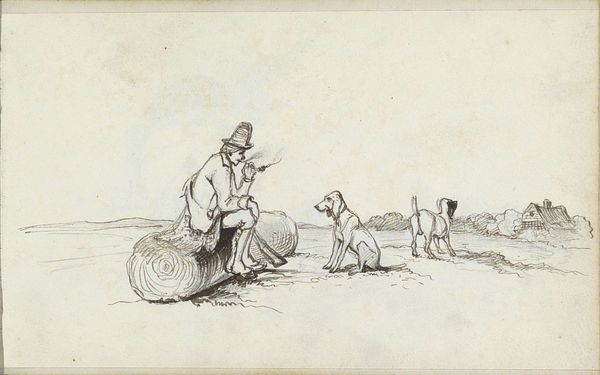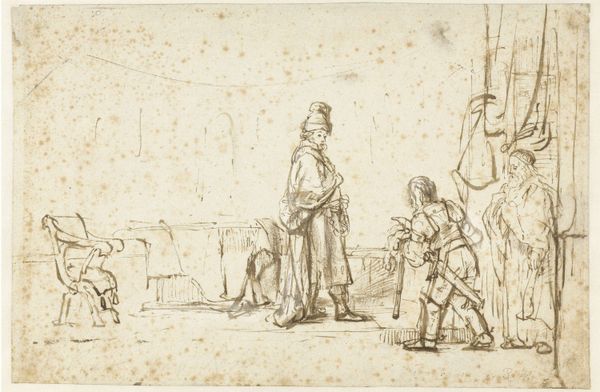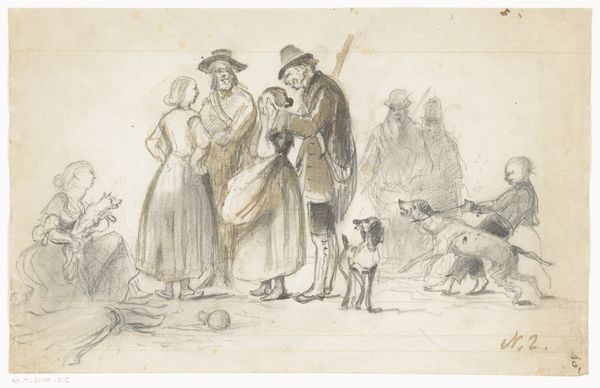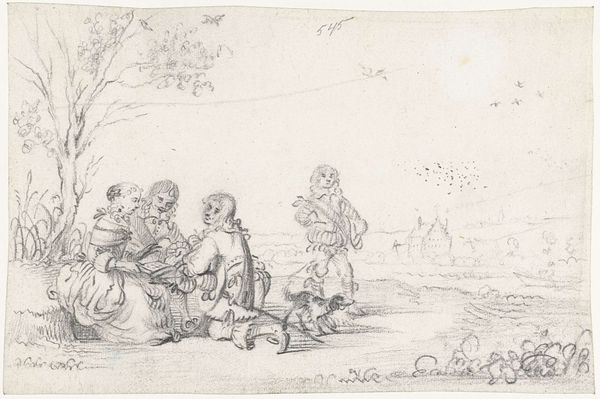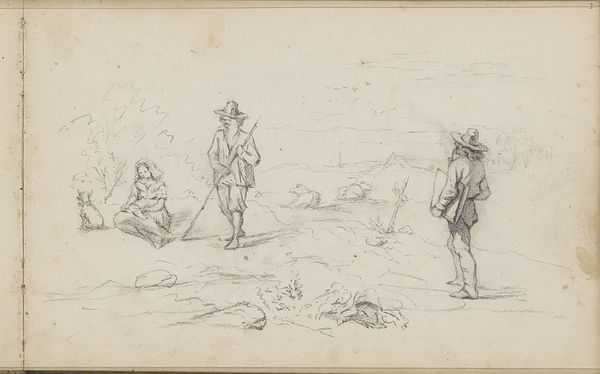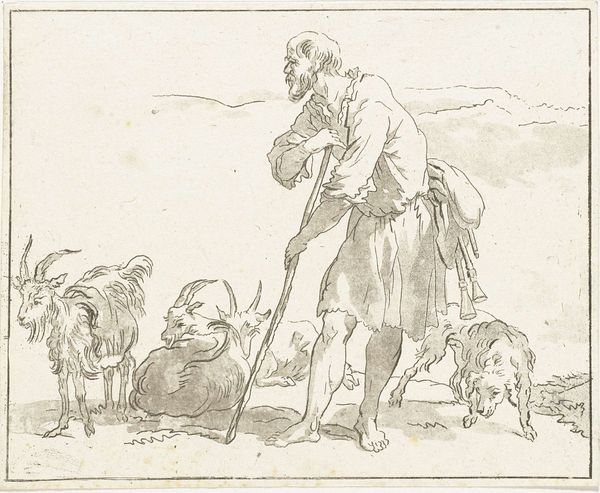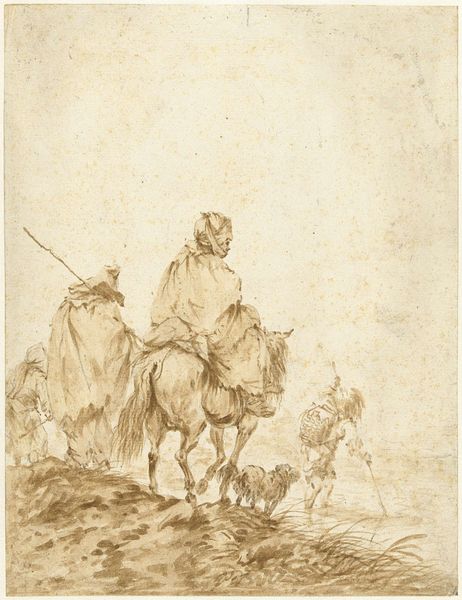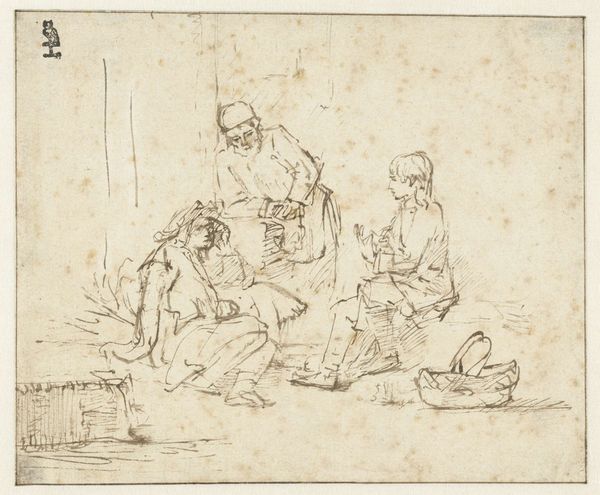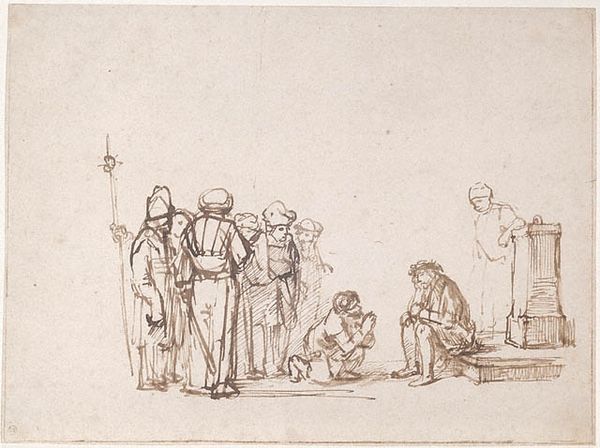
drawing, paper, pencil
#
portrait
#
drawing
#
pencil sketch
#
dog
#
landscape
#
figuration
#
paper
#
romanticism
#
pencil
Copyright: Rijks Museum: Open Domain
Editor: We're looking at "Landschap met een jachtgezelschap," or "Landscape with a Hunting Party," a pencil drawing on paper made by Johannes Tavenraat around 1843-1844. It feels very stark, almost unfinished, with these figures so isolated on the page. How do you interpret this work, especially within its historical context? Curator: That “unfinished” quality is precisely what strikes me. Consider the historical moment: the 1840s. The Romantic era is wrestling with ideas of man’s place in nature, often glorifying it. Yet, this drawing subtly undermines that narrative. We see figures engaged in a traditionally upper-class pursuit – hunting – but they appear almost caricatured, lacking nobility. It almost looks satirical. Editor: Satirical? That's interesting. The clothing seems fairly accurate for the period. Where's the critique coming from? Curator: Look at the dogs. Hunting dogs were bred for specific purposes. Their use embodies a deliberate power dynamic: humans exploiting animals for sport and the economic structures supporting this lifestyle. Tavenraat seems less concerned with romanticizing the hunt than exposing its constructedness. Ask yourself, what anxieties about class, land ownership, and human control over nature might Tavenraat be subtly engaging with here? Is it truly a landscape, or a social commentary disguised as one? Editor: I hadn't considered that reading, focusing on the dogs and the act of hunting as a point of tension. Seeing it as less about nature and more about the social hierarchy *within* nature is revealing. Curator: Exactly. Art provides a mirror to societal values. This understated sketch invites us to interrogate those values. The seeming emptiness of the background and the lack of dramatic detail actually forces the viewer to complete that social story of nature. Editor: Thanks. Now, when I look at it, it's unsettling but powerful, seeing the historical critique. Curator: It's precisely this sort of intersectional analysis that makes engaging with older art relevant to modern life.
Comments
No comments
Be the first to comment and join the conversation on the ultimate creative platform.
